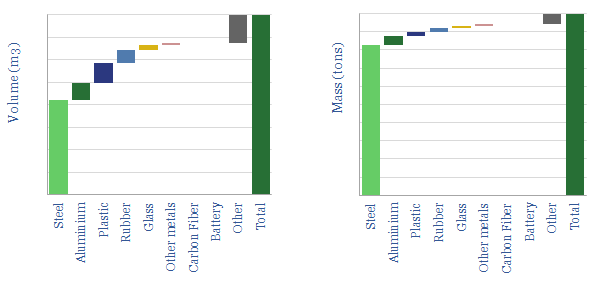This data-file breaks down the typical materials that contribute to the weight of a 2-ton car. We estimate that steel comprises c50% of the volume and c80% of the weight.
Replacing 10% of this steel with a lighter and stronger alternative, such as carbon fiber is likely to improve a vehicle’s overall weight and fuel economy by c16%. Carbon fiber emits more CO2 as it is produced, but this is repaid after around 20,000 miles of driving. Carbon fiber is also c50x more expensive than steel, but again this up-front cost is paid back after 30,000-70,000 miles of driving.
For comparison, adding a 10kWh battery to hybridise a vehicle likely pays back after 10,000-30,000 miles.
Underlying calculations can be stress-tested in the data-file. Materials that improve underlying vehicle weights include carbon fiber, advanced polymers and aluminium, as summarized via the links below.
